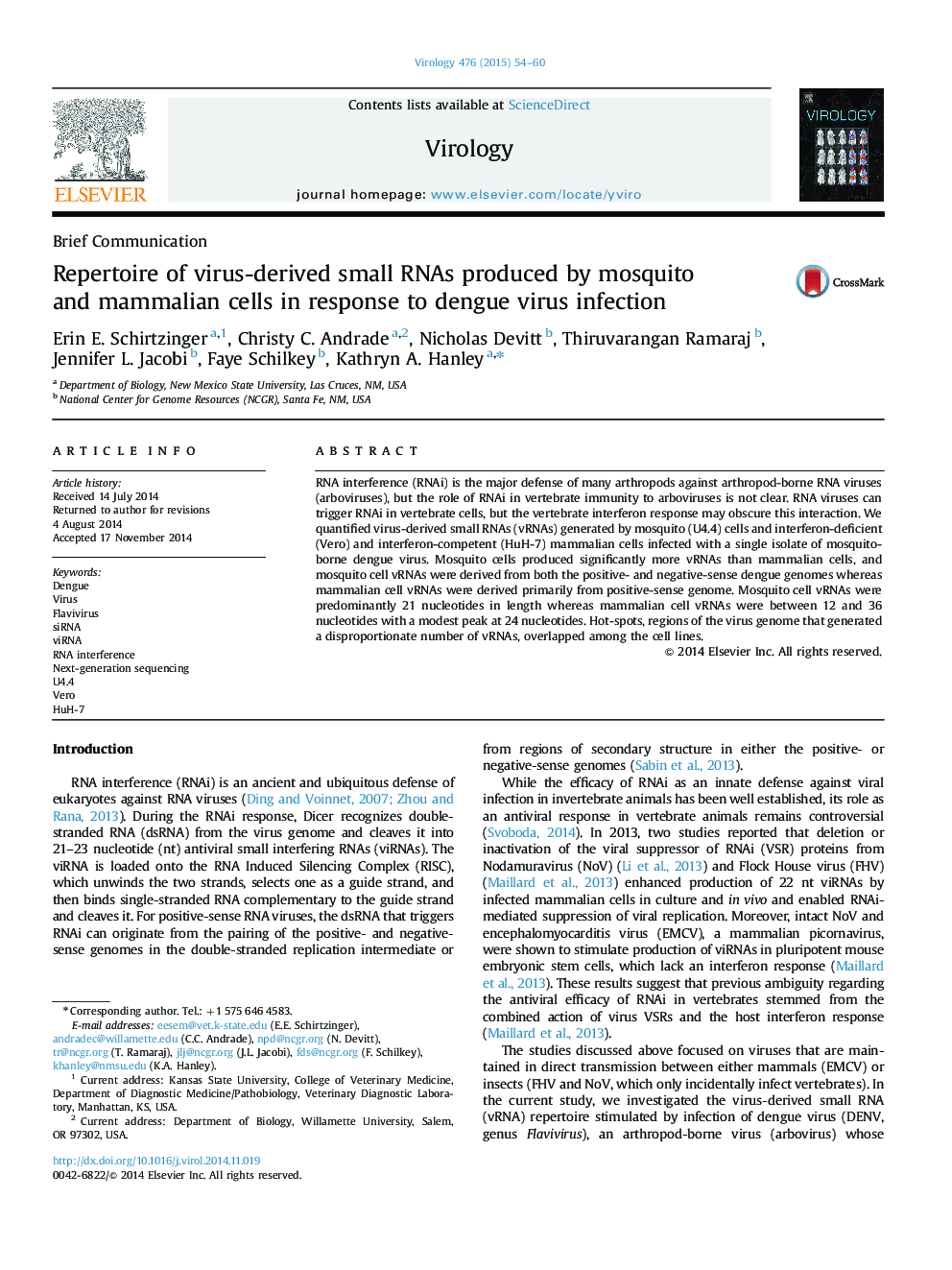| Article ID | Journal | Published Year | Pages | File Type |
|---|---|---|---|---|
| 6139704 | Virology | 2015 | 7 Pages |
Abstract
RNA interference (RNAi) is the major defense of many arthropods against arthropod-borne RNA viruses (arboviruses), but the role of RNAi in vertebrate immunity to arboviruses is not clear. RNA viruses can trigger RNAi in vertebrate cells, but the vertebrate interferon response may obscure this interaction. We quantified virus-derived small RNAs (vRNAs) generated by mosquito (U4.4) cells and interferon-deficient (Vero) and interferon-competent (HuH-7) mammalian cells infected with a single isolate of mosquito-borne dengue virus. Mosquito cells produced significantly more vRNAs than mammalian cells, and mosquito cell vRNAs were derived from both the positive- and negative-sense dengue genomes whereas mammalian cell vRNAs were derived primarily from positive-sense genome. Mosquito cell vRNAs were predominantly 21 nucleotides in length whereas mammalian cell vRNAs were between 12 and 36 nucleotides with a modest peak at 24 nucleotides. Hot-spots, regions of the virus genome that generated a disproportionate number of vRNAs, overlapped among the cell lines.
Related Topics
Life Sciences
Immunology and Microbiology
Virology
Authors
Erin E. Schirtzinger, Christy C. Andrade, Nicholas Devitt, Thiruvarangan Ramaraj, Jennifer L. Jacobi, Faye Schilkey, Kathryn A. Hanley,
